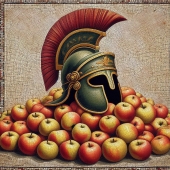





 1
1




List of Bryant RedHawk's Epic Soil Series Threads We love visitors, that's why we live in a secluded cabin deep in the woods. "Buzzard's Roost (Asnikiye Heca) Farm." Promoting permaculture to save our planet.




 3
3





Living in Anjou , France,
For the many not for the few
http://www.permies.com/t/80/31583/projects/Permie-Pennies-France#330873




 1
1





Living in Anjou , France,
For the many not for the few
http://www.permies.com/t/80/31583/projects/Permie-Pennies-France#330873




Living in Anjou , France,
For the many not for the few
http://www.permies.com/t/80/31583/projects/Permie-Pennies-France#330873
 1
1




















Kevin Goheen wrote:Unfortunately I meant something naturally dwarfed instead of copyrighted apple varieties for that purpose.I do appreciate it though.
List of Bryant RedHawk's Epic Soil Series Threads We love visitors, that's why we live in a secluded cabin deep in the woods. "Buzzard's Roost (Asnikiye Heca) Farm." Promoting permaculture to save our planet.




Standing on the shoulders of giants. Giants with dirt under their nails
















List of Bryant RedHawk's Epic Soil Series Threads We love visitors, that's why we live in a secluded cabin deep in the woods. "Buzzard's Roost (Asnikiye Heca) Farm." Promoting permaculture to save our planet.




Standing on the shoulders of giants. Giants with dirt under their nails




Living in Anjou , France,
For the many not for the few
http://www.permies.com/t/80/31583/projects/Permie-Pennies-France#330873




Standing on the shoulders of giants. Giants with dirt under their nails




Living in Anjou , France,
For the many not for the few
http://www.permies.com/t/80/31583/projects/Permie-Pennies-France#330873
















List of Bryant RedHawk's Epic Soil Series Threads We love visitors, that's why we live in a secluded cabin deep in the woods. "Buzzard's Roost (Asnikiye Heca) Farm." Promoting permaculture to save our planet.




Standing on the shoulders of giants. Giants with dirt under their nails




Living in Anjou , France,
For the many not for the few
http://www.permies.com/t/80/31583/projects/Permie-Pennies-France#330873




Standing on the shoulders of giants. Giants with dirt under their nails




Living in Anjou , France,
For the many not for the few
http://www.permies.com/t/80/31583/projects/Permie-Pennies-France#330873








Standing on the shoulders of giants. Giants with dirt under their nails
















source: U.TennesseeApple varieties that normally show good to excellent
resistance to cedar-apple rust include Red Delicious,
McIntosh, Arkansas Black, Winesap, Mollies
Delicious, Spartan, Priscilla, Liberty and Empire.
Varieties that are usually highly susceptible include
Prima, Sir Prize, Lodi, Jonathan, Rome, Golden
Delicious and Jonafree.
source: U. of NebraskaDuring warm rainy days in late April and early May, cedar trees infected with the cedar-apple rust fungus will develop bright orange, gelatinous galls.
Cedar-apple rust is an interesting disease. It requires both an apple and cedar or juniper to complete its life cycle. On the cedar, the fungus produces reddish-brown galls that are up to golf-ball size on young twigs. During wet weather these galls swell and begin to push out bright orange gelatinous tubular structures. Wind carries fungal spores from these gelatinous structures to susceptible apple or crabapple cultivars.
Infection occurs when these spores land on a susceptible apple cultivar and moist conditions prevail. Small, yellow spots begin to appear on the upper leaf surface shortly after bloom. Spots gradually enlarge and become a bright yellow-orange color. These brightly colored spots make the disease easy to identify on leaves.
Fortunately, there are many varieties available now that show good disease resistance. Redfree, Liberty, William's Pride, and Freedom are examples of new apple varieties that are immune to cedar-apple rust. These varieties are also immune to apple scab and show good resistance to powdery mildew and fire blight. Examples of apples that are susceptible to cedar-apple rust include Jonathan, Rome, Wealthy, York Imperial, and Golden Delicious.
List of Bryant RedHawk's Epic Soil Series Threads We love visitors, that's why we live in a secluded cabin deep in the woods. "Buzzard's Roost (Asnikiye Heca) Farm." Promoting permaculture to save our planet.








Standing on the shoulders of giants. Giants with dirt under their nails




Bryant RedHawk wrote:Keep in mind that dwarf and semi-dwarf trees tend to live for approximately 20-25 years instead of the 150+ that standard size trees can live.
yet another victim of Obsessive Weeding Disorder




Check out Redhawk's soil series: https://permies.com/wiki/redhawk-soil




Kevin Goheen wrote:I want to start a good supply of grafted apples on the farm. ..... What would be a good semi-dwarf or dwarf species that is compatible with apple scions?





|
Everyone is a villain in someone else's story. Especially this devious tiny ad:
The new gardening playing cards kickstarter is now live!
https://www.kickstarter.com/projects/paulwheaton/garden-cards
|




